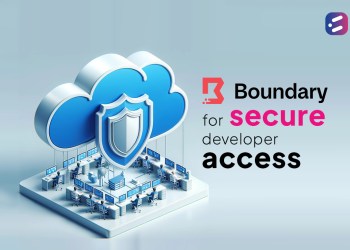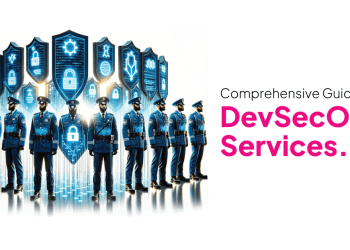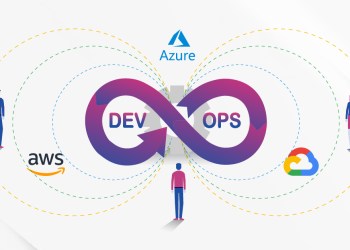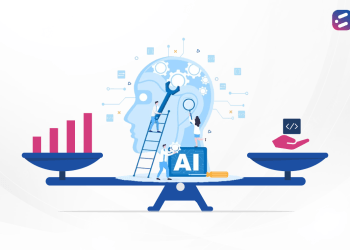 DevOps is essentially a collaborative model that brings together software development and operations. DevSecOps integrates security throughout the software development life cycle. The two have a lot in common in the sense they both use automation to improve the development process and business, eliminating bottlenecks.
DevOps is essentially a collaborative model that brings together software development and operations. DevSecOps integrates security throughout the software development life cycle. The two have a lot in common in the sense they both use automation to improve the development process and business, eliminating bottlenecks.
With DevOps, automation allows updates to be deployed more quickly, while with DevSecOps, automation provides secure processes automatically, reducing overhead and human error. Similarly, in DevOps, active monitoring involves early testing to ensure quick updates while in DevSecOps, active monitoring involves keeping watch for malicious logins and unauthorized access.
DevOps is focused on efficiency, while DevSecOps brings security into the mix.
Here’s how you can plan your transition to a DevSecOps Strategy
- Adopt a security-first culture that integrates security into every aspect of the application lifecycle.
- Provide ongoing security training for developers, operations personnel, security teams, and everyone involved in the CI/CD pipeline, as this will help stay updated with the latest security practices and technologies.
- Maintain a proactive approach to the evolving threat landscape and emerging practices to prevent and mitigate emerging threats. Embed security measures throughout the software development lifecycle, conducting threat modeling, security testing, and secure code deployment.
- Modernize cloud-based and cloud-native microservices architecture to enhance scalability, flexibility, and security so that vulnerabilities are fixed without disruption to operations.
- Only select secure DevOps tools that align with CI/CD security requirements and then regularly review and update these tools to ensure they remain secure and up to date.
- Automate security testing with tools such as static analysis security testing, dynamic analysis security testing, and software composition analysis (SCA). Also regularly review and update security policies and procedures to align with industry standards and regulatory frameworks.
Let’s look at the example of Paypal’s DevSecOps Implementation
In 2017, PayPal had 4,500 developers, 1 million builds per month, 2,600 apps, and 42,000 batch executions a day, which is why the company embedded repeatable proactive security practices in their product life cycle too, according to their security strategist, “make it incredibly hard for developers to shoot themselves in the foot when it comes to security”.
“Change champions” and “transformation team members” were assigned to help the organization through the process, which they wanted to complete in less than a year.
Paypal also created actionable security stories in developer lingo, not security lingo, added clear usage guidelines, provided secure code snippets, and gave developers the autonomy to implement approved security controls. And of course, it led to improved efficiency too.
Cultural and technical challenges in DevSecOps, and their solutions
- Resistance: Siloed organizational structures can hinder the transition to DevSecOps. The solution here would be to encourage open communication.
- Legacy: Outdated processes may not easily integrate with DevSecOps practices, but gradual modernization and implementation of automated security controls can help with the transition to a modern environment.
- Tools: The array of security tools and technologies available can be overwhelming but choosing the right one that integrates with existing workflows and provides comprehensive security coverage is essential. Also, invest in training to ensure teams are proficient in using these tools.
Tools and tech to power your transition to a DevSecOps strategy
- Static Application Security Testing identifies security vulnerabilities in source code during the development phase
- Dynamic Application Security Testing simulates attacks and runs applications for vulnerabilities
- Container Security Scanning checks container images for vulnerabilities and misconfigurations before deployment
- Infrastructure as Code (IaC) Security ensures security best practices using automation tools like Terraform or AWS CloudFormation
Measuring success in your DevSecOps Implementation
It requires a combination of quantitative and qualitative metrics. Some of them are…
- Application change time: Includes the time used to build, test, and release an update. Shorter times can suggest more efficient development pipelines. Similarly, application deployment frequency or the number of deployments to production in a period could suggest problems with the team or workflow.
- Change failure rate or percentage of failed production deployments: A high failure rate could indicate a problem with team skills or the deployment process.
- Mean time to recovery (MTTR): This is the time between a failed deployment and subsequent full restoration of production operations. Short MTTR metrics indicate strong control of the deployment environment.
- Patch time: This is the time between identifying a vulnerability and successful production deployment of a patch. It’s indicative of DevSecOps developers’ ability to find and fix a software defect.
Transitioning from DevOps to DevSecOps is critical for businesses today and if you are looking for a way to adopt the right tools and technologies to integrate security into every aspect of the development lifecycle, give us a call at CloudNow.













